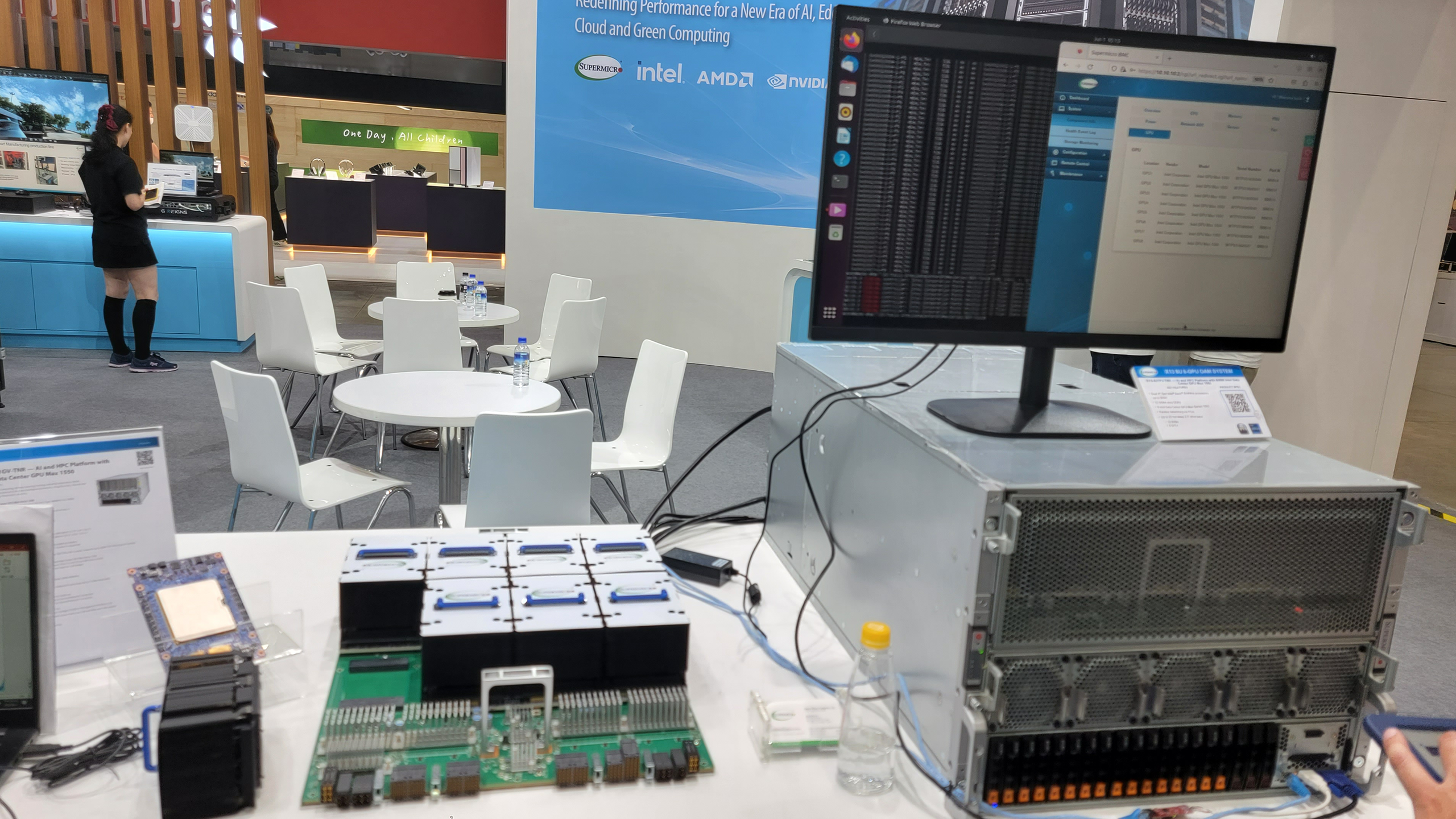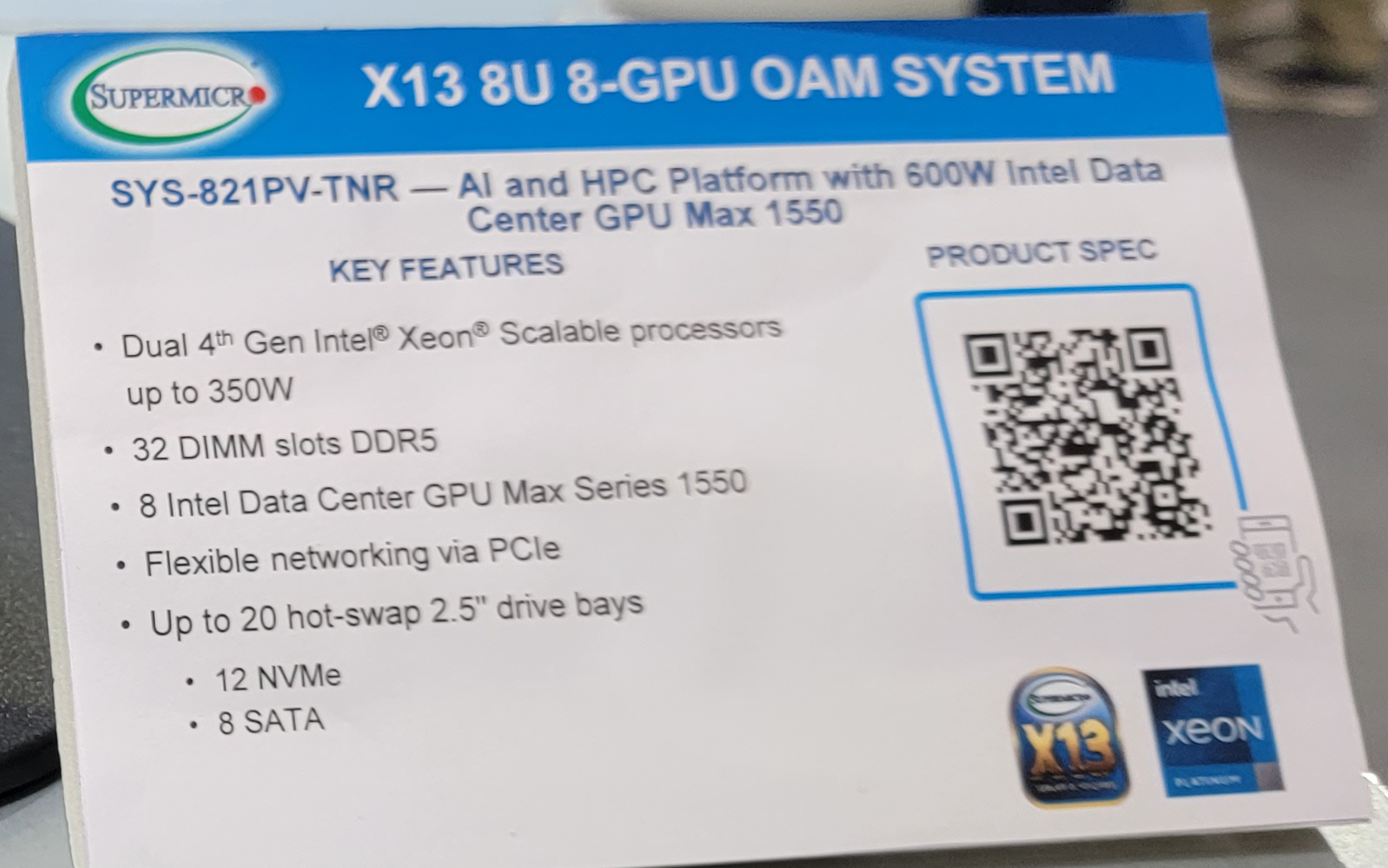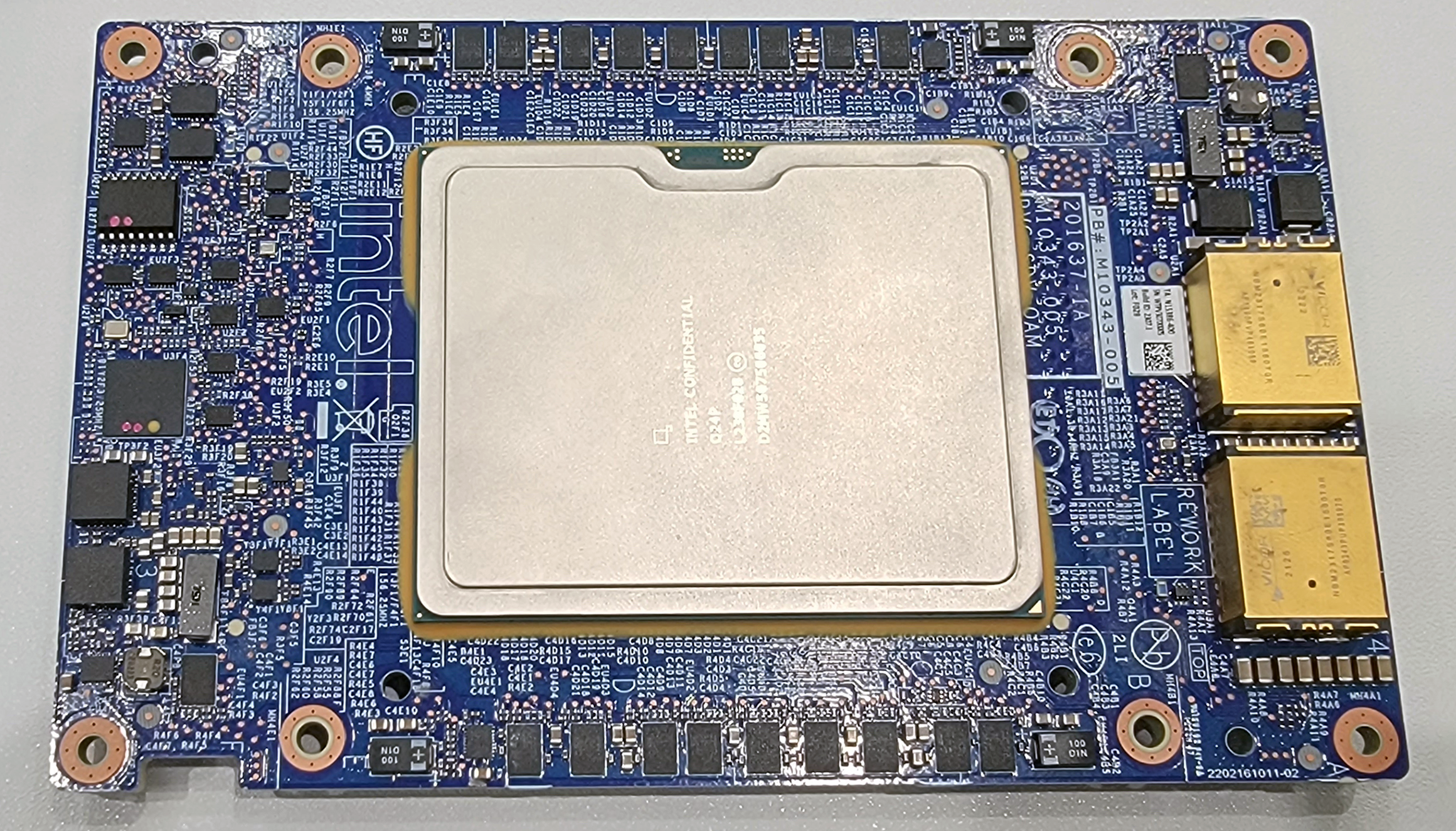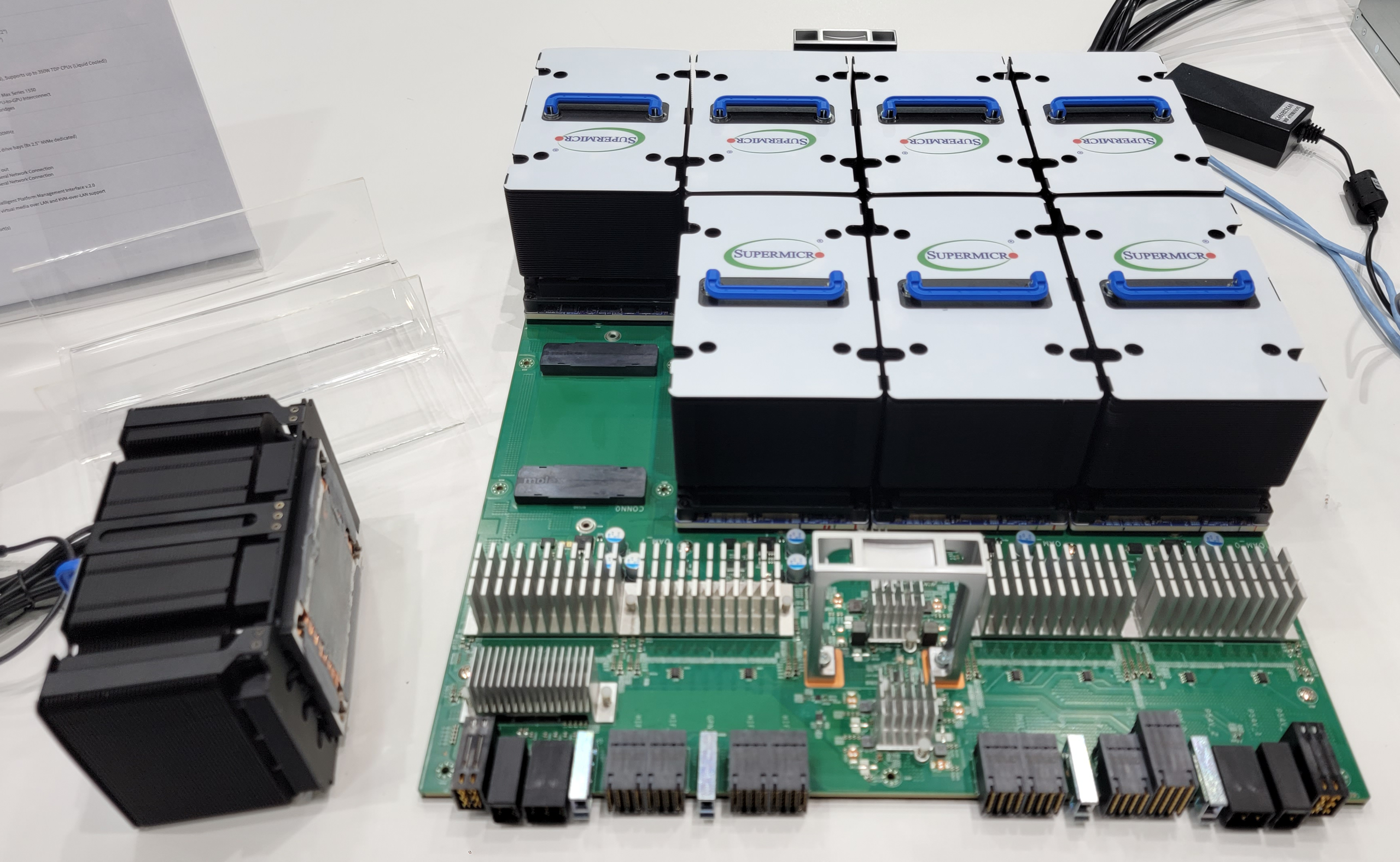Intel's Ponte Vecchio is Finally in The Wild
8-way Intel Ponte Vecchio server demonstrated at Computex.

Although we have been talking about Intel's Ponte Vecchio for over three years now, including pictures from the lab, few of us got to see Intel's Data Center GPU Max 1550 (a product based on the PVC design) in the flesh. That's because the chips were delayed repeatedly and not offered in server systems, but now that's changed, with Intel promising these 8-OAM systems will be available for its customers in July. At Computex, Supermicro decided to correct this wrong and demonstrated its X13 8U 8-way Ponte Vecchio GPU system for AI and HPC as well as the compute GPU itself.

Intel's Ponte Vecchio represents the pinnacle of processor complexity, boasting a transistor count of over 100 billion (excluding memory) and a combined die size of 2,330 mm². The PVC design is a complex arrangement of 47 tiles that includes compute tiles, Rambo cache tiles, Xe Link tiles, and HBM2E memory stacks interconnected using Intel's advanced packaging technologies like Embedded Multi-Die Interconnect Bridge (EMIB) and Foveros. Tiles for PVC are made using a variety of process technologies and then assembled together.
Supermicro's X13 8U 8-way Ponte Vecchio GPU server itself, it is based on two 4th Generation Xeon Scalable 'Sapphire Rapids' processors rated for up to 350W that are mated with 32 DIMM slots as well as up to 20 hot-swap 2.5-inch SSDs (12 NVMe, 8 SATA).


But while Intel's Ponte Vecchio is extremely complex inside, it looks pretty humble in its OAM form-factor with a heatspreader on. Given the fact that the 100-billion-transistors beast is rated for a 600W TDP, it has an intricated voltage regulating module that includes two high-performance converters each of which is serving its own 'half' of MOSFETs for added granularity of power delivery. By contrast, AMD's Instinct MI250X uses only one high-performance converter onboard, though it is 'only' rated for a 550W TDP. Meanwhile, an OAM slot can supply up to 700W of power, so Intel's module was most likely architected with headroom in mind.

600W is an exceptional amount of power, so Supermicro's SYS-821PV-TNR uses huge radiators and high-pressure fans to remove the heat from eight of Intel's Data Center GPU Max 1550 processors. These radiators have seven copper heat pipes and dozens of aluminum fins, so even a PVC radiator is a quite an intricate arrangement.
Get Tom's Hardware's best news and in-depth reviews, straight to your inbox.

Anton Shilov is a contributing writer at Tom’s Hardware. Over the past couple of decades, he has covered everything from CPUs and GPUs to supercomputers and from modern process technologies and latest fab tools to high-tech industry trends.
- Paul AlcornEditor-in-Chief
-
JayNor It is strange that there are systems out, but Intel has yet to give a presentation of the details of that 408MB of L2 SRAM cache. It appears to be a mfg achievement comparable to the 3d V-cache we see so much publicity about.Reply -
MetalScythe Reply
I mean, when you compare the sheer package footprint of this huge data enter GPU to AMD’s client ~80mm2 CCD chiplet size (X3D cache chiplet in particular only covers on-die L3 and a bit of L2)… they’re both comparatively impressive. This is a packaging tour de force for Intel though, and quite a monumental achievement.JayNor said:It is strange that there are systems out, but Intel has yet to give a presentation of the details of that 408MB of L2 SRAM cache. It appears to be a mfg achievement comparable to the 3d V-cache we see so much publicity about.
SRAM libraries for cache/tags can be made very dense when not much combinational logic is present.
Edit: I misread “comparable” as “compared”, my mistake lol. Either way, I’m glad these packaging advancements are happening. It’ll be really interesting when truly active-on-active die stacking becomes feasible/mainstream.